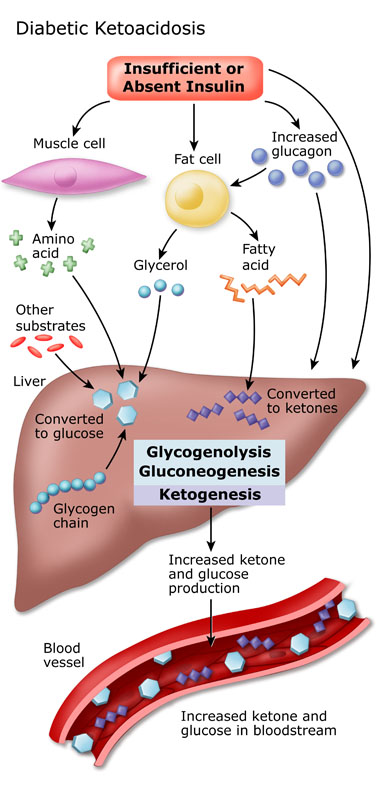It might seem like diabetes is an occupation that takes up all your time, and that there is no other time for finding information about living well in spite of the disease. Finding some new ideas that will help you cope with diabetes can be a quick and fast job using the tips in this article.
- Replace your usual three meals with five or six smaller meals. Eating regularly throughout your day stabilizes your blood sugar levels. You will be more satiated and less likely to binge if your eating is more frequent.
- You need to be aware of all foods that have high glycemic index, which can raise the level of blood sugar quickly in your body. Foods with a high carbohydrate or sugar content include breads, cereal and most fruit juices. Processed foods are not good for your sugar levels. Try replacing processed foods with the usual suspects: meats, seafood, fruits, and vegetables.
- One of the key things you need to understand is what ketoacidosis is and what causes it. This condition is increased acid in the bloodstream and occurs because of blood sugars that are incredibly high. This calls for ketones to be produced by the body, and they raise your blood acid level. Untreated ketoacidosis can put you into a diabetic coma, so it isn't to be trifled with. Confusion, excessive thirst, and breath that smells fruity are all symptoms. You can treat these symptoms with insulin as well as making sure to get yourself hydrated. To prevent this from happening, blood sugar levels should be monitored regularly, take your prescribed dosage of insulin and develop a keen awareness of the signs and symptoms of ketoacidosis.

- The glycemic index is a number that reflects how much effect different foods have on your blood sugar level. Select foods with a low glycemic index.
- A common diabetic myth is that you have to avoid sugar. There is no need to cut sugar out entirely, but you do need to be vigilant about what sweets you eat. Portion control is key along with keeping the frequency of these treats low. If you do choose to indulge, you should compensate by cutting carbohydrates from your meals that day.
- Remember that diabetics must be extremely cautious when having a pedicure. Since diabetics are at an increased risk for foot-related complications, it is especially important to safeguard against possible fungal infections or cuts.
- Even if you're feeling sick and not hungry, a diabetic needs to be more careful about how and when they eat. Low glucose levels will lead to dehydration, so keep water handy.
- Chocolate has a lot of fat in it, yet it contains a lot of sugar. Fat is processed by the body slowly, which makes it harder for chocolate to help quickly when you have a low. Fat-free snacks with a high sugar content are preferable when you are experiencing low blood sugar levels. They release their sugars faster and can quickly bring your blood sugar level back into the normal range.
- Almonds are a great snack to fill you up without affecting your blood sugar levels. Unsalted almonds are filled with protein, fiber and many other nutrients that are very healthy. Fill a bowl with almonds for snacks you can grab whenever you feel hungry.
- Diabetics are at risk of many foot problems. Being careless with your feet, such as walking around barefoot, can lead to complications which might have to be cured through amputation. Follow these points, and the good advice of your diabetic specialist, to make sure your feet remain in tip-top shape.
- No employers are not allowed to dismiss applicants because they have diabetes. Thus, it is not necessary to inform anyone about your medical issues up front.
- Don't stuff your face with food, if you suffer from hypoglycemia. While it is important to get adequate sugars from the diet, excess sugar gives higher blood sugar levels, and this causes even more negative problems for the body.
- It is very important not always rely only on the urine ketone test for evaluating your blood sugar. High ketone levels within the urine signify only that your blood sugar is roughly greater than two hundred milligrams per deciliter (mg/dl). Use a home glucose gauge to check the precise amount of glucose inside your blood as an alternative. The American Diabetes Association (ADA) looks at such type of tests to be far more accurate compared to urine evaluation.
Sometimes, certain kinds of diabetes have a cure. Remember that adapting your lifestyle is really in your best interest. The above advice will provide you some assistance, but it can't be completely depended on to solve all your problems. The rest is yours to do.
No comments:
Post a Comment